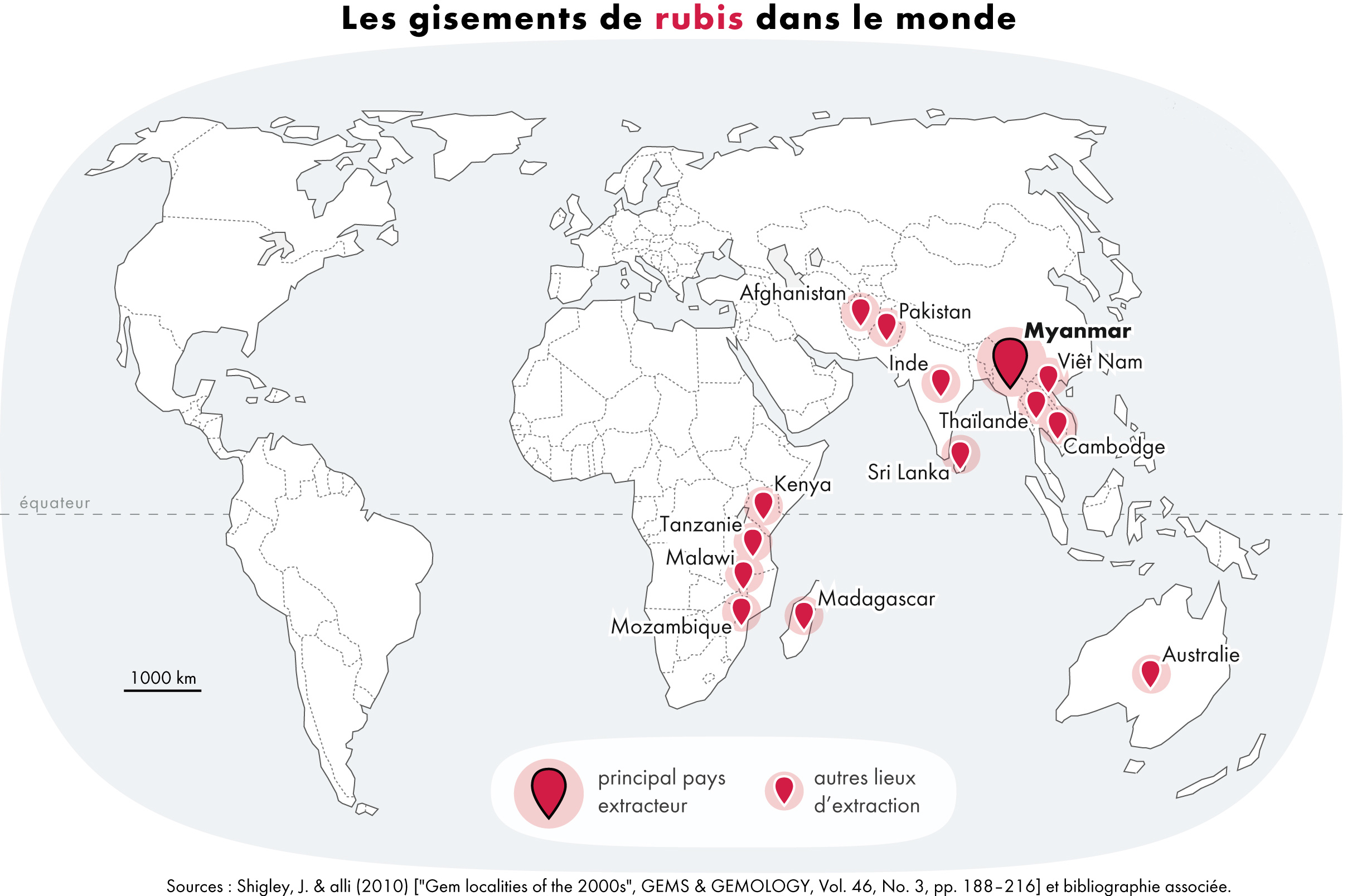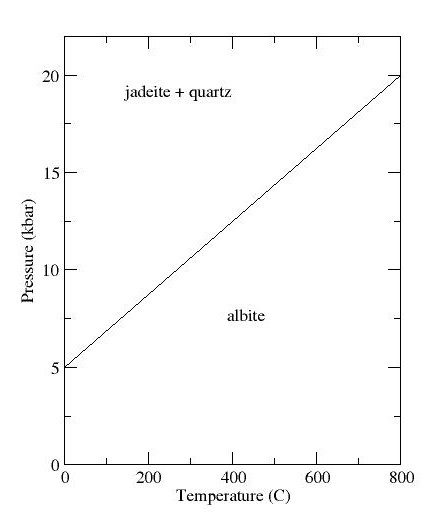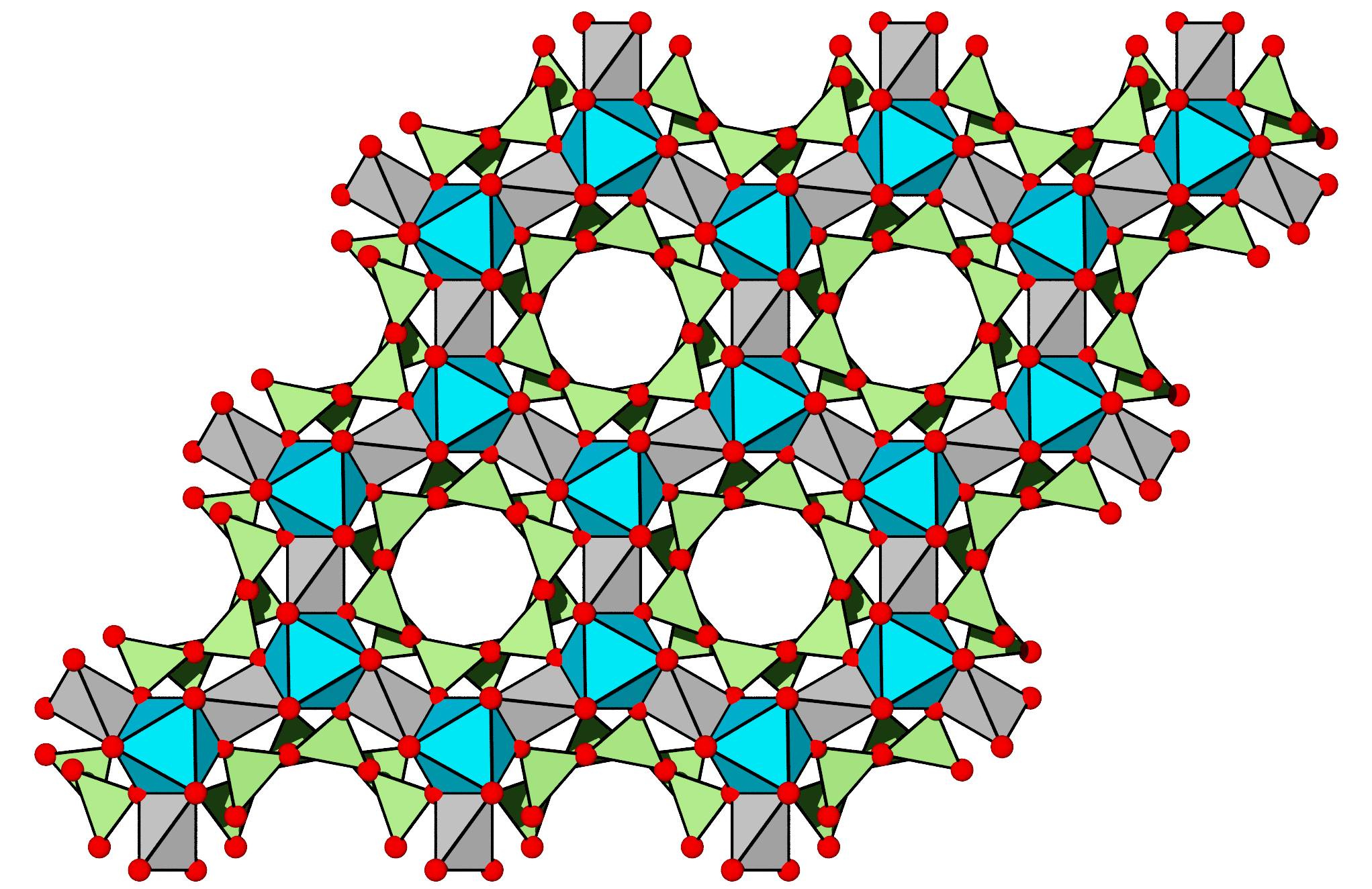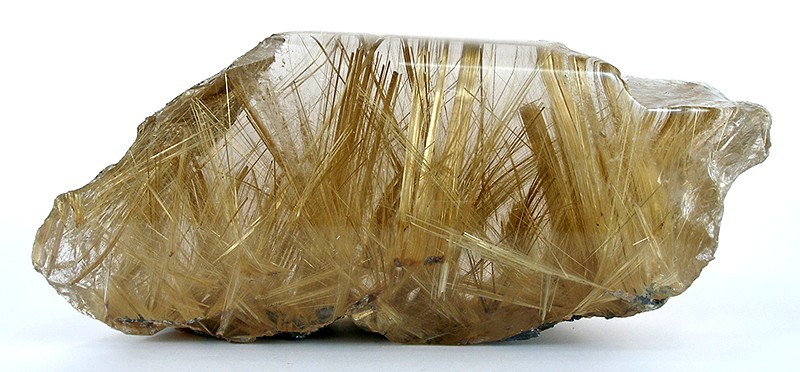|
Mining In Pakistan
Mining is an important industry in Pakistan. Pakistan has deposits of several minerals including coal, copper, gold, chromite, mineral salt, bauxite and several other minerals. There are also a variety of precious and semi-precious minerals that are also mined. These include peridot, aquamarine, topaz, ruby, emerald, rare-earth minerals bastnaesite and xenotime, sphene, tourmaline, and many varieties and types of quartz. The Pakistan Mineral Development Corporation is the responsible authority for the support and development of the mining industry. The Gemstones Corporation of Pakistan looks after the interests of stake holders in gemstone mining and polishing as an official entity. Balochistan has the most mineral deposits among the provinces of Pakistan, with Sindh rich in coal deposit and Khyber Pakhtunkhwa rich in gems. Oil, gas and minerals used in nuclear energy purposes are mined by the federal government. The mining of other minerals is a provincial concern. Currently ar ... [...More Info...] [...Related Items...] OR: [Wikipedia] [Google] [Baidu] |
Pakistan
Pakistan, officially the Islamic Republic of Pakistan, is a country in South Asia. It is the List of countries and dependencies by population, fifth-most populous country, with a population of over 241.5 million, having the Islam by country#Countries, second-largest Muslim population as of 2023. Islamabad is the nation's capital, while Karachi is List of cities in Pakistan by population, its largest city and financial centre. Pakistan is the List of countries and dependencies by area, 33rd-largest country by area. Bounded by the Arabian Sea on the south, the Gulf of Oman on the southwest, and the Sir Creek on the southeast, it shares land borders with India to the east; Afghanistan to the west; Iran to the southwest; and China to the northeast. It shares a maritime border with Oman in the Gulf of Oman, and is separated from Tajikistan in the northwest by Afghanistan's narrow Wakhan Corridor. Pakistan is the site of History of Pakistan, several ancient cultures, including the ... [...More Info...] [...Related Items...] OR: [Wikipedia] [Google] [Baidu] |
Chiniot
Chiniot ( Punjabi, Urdu: ) is a city and the administrative headquarters of Chiniot District in the province of Punjab, Pakistan. Located on the bank of the river Chenab, it is the 28th most populous city in Pakistan. It is also known for its intricate wooden furniture, architecture, and mosques, and is home to the Omar Hayat Mahal. History Early The origins of Chiniot are obscure, and historical records accurately detailing its founding unavailable. According to some accounts, the city was founded by an ancient king's daughter named Chandan, who while on a hunting expedition, was charmed by the surrounding area, and ordered the construction of the settlement of ''Chandaniot,'' alternatively spelt ''Chandniot,'' which was named in her honour. The name Chiniot, a contracted version of the original name, eventually gained favour, though the older name had been used up until at least the 1860s. Mughal During Mughal rule, Chiniot was governed as part of the '' subah, ... [...More Info...] [...Related Items...] OR: [Wikipedia] [Google] [Baidu] |
Ruby
Ruby is a pinkish-red-to-blood-red-colored gemstone, a variety of the mineral corundum ( aluminium oxide). Ruby is one of the most popular traditional jewelry gems and is very durable. Other varieties of gem-quality corundum are called sapphires; given that the rest of the corundum species are called as such, rubies are sometimes referred to as "red sapphires". Ruby is one of the traditional cardinal gems, alongside amethyst, sapphire, emerald, and diamond. The word ''ruby'' comes from ''ruber'', Latin for red. The color of a ruby is due to the presence of chromium. Some gemstones that are popularly or historically called rubies, such as the Black Prince's Ruby in the British Imperial State Crown, are actually spinels. These were once known as "Balas rubies". The quality of a ruby is determined by its color, cut, and clarity, which, along with carat weight, affect its value. The brightest and most valuable shade of red, called blood-red or pigeon blood, commands a lar ... [...More Info...] [...Related Items...] OR: [Wikipedia] [Google] [Baidu] |
Jadeite
Jadeite is a pyroxene mineral with composition Na Al Si2 O6. It is hard (Mohs hardness of about 6.5 to 7.0), very tough, and dense, with a specific gravity of about 3.4. It is found in a wide range of colors, but is most often found in shades of green or white. Jadeite is formed only in the subduction zones of continental margins, where rock undergoes metamorphism at high pressure but relatively low temperature. Jadeite is the principal mineral making up the most valuable form of jade, a precious stone particularly prized in China. Most gem-quality jadeite jade comes from northern Myanmar. Jade tools and implements have been found at Stone Age sites, showing that the mineral has been prized by humans since before the beginning of recorded history, written history. Name The name ''jadeite'' is derived (via and ) from the Spanish language, Spanish phrase "piedra de ijada" which means "stone of the side". The Latin version of the name, ''lapis nephriticus'', is the origin of the ... [...More Info...] [...Related Items...] OR: [Wikipedia] [Google] [Baidu] |
Aquamarine (gemstone)
Aquamarine is a pale-blue to light-green variety of the beryl, beryl family, with its name relating to water and sea. The color of aquamarine can be changed by heat, with a goal to enhance its physical appearance (though this practice is frowned upon by collectors and jewelers). It is the birth stone of March. Aquamarine is a fairly common gemstone, rendering it more accessible for purchase, compared to other gems in the beryl family. Overall, its value is determined by weight, color, cut, and clarity. It is transparent to translucent and possesses a hexagonal crystal system. Aquamarine mainly forms in granite pegmatites and hydrothermal veins, and it is a very lengthy process that can take millions of years to form. Aquamarine occurs in many countries over the world, and is most commonly used for jewelry, decoration and its properties. Aquamarine is mainly extracted through open-pit mining, however underground mining is also a possibility to access aquamarine reserves. Aquama ... [...More Info...] [...Related Items...] OR: [Wikipedia] [Google] [Baidu] |
Rutile
Rutile is an oxide mineral composed of titanium dioxide (TiO2), the most common natural form of TiO2. Rarer polymorphs of TiO2 are known, including anatase, akaogiite, and brookite. Rutile has one of the highest refractive indices at visible wavelengths of any known crystal and also exhibits a particularly large birefringence and high dispersion. Owing to these properties, it is useful for the manufacture of certain optical elements, especially polarization optics, for longer visible and infrared wavelengths up to about 4.5 micrometres. Natural rutile may contain up to 10% iron and significant amounts of niobium and tantalum. Rutile derives its name from the Latin ('red'), in reference to the deep red color observed in some specimens when viewed by transmitted light. Rutile was first described in 1803 by Abraham Gottlob Werner using specimens obtained in Horcajuelo de la Sierra, Madrid (Spain), which is consequently the type locality. Occurrence Rutile is a comm ... [...More Info...] [...Related Items...] OR: [Wikipedia] [Google] [Baidu] |
Idocrase
Vesuvianite, also known as idocrase, is a green, brown, yellow, or blue silicate mineral. Vesuvianite occurs as tetragonal crystals in skarn deposits and limestones that have been subjected to contact metamorphism. It was first discovered within included blocks or adjacent to lavas on Mount Vesuvius, hence its name. Attractive-looking crystals are sometimes cut as gemstones. Localities which have yielded fine crystallized specimens include Mount Vesuvius and the Ala Valley near Turin, Piedmont. The specific gravity is 3.4 and the Mohs hardness is . The name "vesuvianite" was given by Abraham Gottlob Werner in 1795, because fine crystals of the mineral are found at Vesuvius; these are brown in color and occur in the ejected limestone blocks of Monte Somma. Several other names were applied to this species, one of which, "idocrase" by René Just Haüy in 1796, is now in common use. A sky bluish variety known as cyprine has been reported from Franklin, New Jersey and other locatio ... [...More Info...] [...Related Items...] OR: [Wikipedia] [Google] [Baidu] |
Agate
Agate ( ) is a banded variety of chalcedony. Agate stones are characterized by alternating bands of different colored chalcedony and sometimes include macroscopic quartz. They are common in nature and can be found globally in a large number of different varieties. There are some varieties of chalcedony without bands that are commonly called agate ( moss agate, fire agate, etc.); however, these are more properly classified solely as varieties of chalcedony. Agates are primarily formed as nodules within volcanic rock, but they can also form in veins or in sedimentary rock. Agate has been popular as a gemstone in jewelry for thousands of years, and today it is also popular as a collector's stone. Some duller agates sold commercially are artificially dyed to enhance their color. Etymology Agate was given its name by Theophrastus, a Greek philosopher and naturalist. He discovered the stone c. 350 BCE along the shoreline of the River Achates (), now the Dirillo River, on the Italian ... [...More Info...] [...Related Items...] OR: [Wikipedia] [Google] [Baidu] |
Rodingite
Rodingite is a metasomatic rock composed of grossular- andradite garnet, calcic pyroxene, vesuvianite, epidote and scapolite. Rodingites are common where mafic rocks are in proximity to serpentinized ultramafic rocks. The mafic rocks are altered by high pH, Ca2+ and OH− fluids, which are a byproduct of the serpentinization process, and become rodingites. The mineral content of rodingites is highly variable, their high calcium, low silicon and environment of formation being their defining characteristic. Rodingites are common in ophiolites, serpentinite mélanges, ocean floor peridotites and eclogite massifs. Rodingite was first named from outcrops of the Dun Mountain Ophiolite Belt in the Roding River, Nelson, New Zealand New Zealand () is an island country in the southwestern Pacific Ocean. It consists of two main landmasses—the North Island () and the South Island ()—and List of islands of New Zealand, over 600 smaller islands. It is the List of isla .... An ... [...More Info...] [...Related Items...] OR: [Wikipedia] [Google] [Baidu] |
Hessonite
Grossular is a calcium-aluminium species of the garnet group of minerals. It has the chemical formula of Ca3Al2(SiO4)3 but the calcium may, in part, be replaced by ferrous iron and the aluminium by ferric iron. The name grossular is derived from the botanical name for the gooseberry, ''grossularia'', in reference to the green garnet of this composition that is found in Siberia. Other shades include cinnamon brown (cinnamon stone variety), red, and yellow. Grossular is a gemstone. In geological literature, grossular has often been called ''grossularite''. Since 1971, however, use of the term grossularite for the mineral has been discouraged by the International Mineralogical Association. Hessonite Hessonite or "cinnamon stone" is a common variety of grossular with the general formula: Ca3Al2Si3O12. The name comes from the (hēssōn), meaning ''inferior''; an allusion to its lower hardness and lower density than most other garnet species varieties. It has a characteristic red col ... [...More Info...] [...Related Items...] OR: [Wikipedia] [Google] [Baidu] |
Actinolite
Actinolite is an amphibole silicate mineral with the chemical formula . Etymology The name ''actinolite'' is derived from the Greek word ''aktis'' (), meaning "beam" or "ray", because of the mineral's fibrous nature. Mineralogy Actinolite is an intermediate member in a solid-solution series between magnesium-rich tremolite, , and iron-rich ferro-actinolite, . Mg and Fe ions can be freely exchanged in the crystal structure. Like tremolite, asbestiform actinolite is regulated as asbestos. Occurrence Actinolite is commonly found in metamorphic rocks, such as contact aureoles surrounding cooled intrusive igneous rocks. It also occurs as a product of metamorphism of magnesium-rich limestones. The old mineral name ''uralite'' is at times applied to an alteration product of primary pyroxene by a mixture composed largely of actinolite. The metamorphosed gabbro or diabase rock bodies, referred to as epidiorite, contain a considerable amount of this ''uralitic'' alteration. F ... [...More Info...] [...Related Items...] OR: [Wikipedia] [Google] [Baidu] |
Lahore
Lahore ( ; ; ) is the capital and largest city of the Administrative units of Pakistan, Pakistani province of Punjab, Pakistan, Punjab. It is the List of cities in Pakistan by population, second-largest city in Pakistan, after Karachi, and 27th List of largest cities, largest in the world, with a population of over 14 million. Lahore is one of Pakistan's major industrial, educational and economic hubs. It has been the historic capital and cultural center of the wider Punjab region, and is one of Pakistan's most Social liberalism, socially liberal, Progressivism, progressive, and Cosmopolitanism, cosmopolitan cities. Origins of Lahore, Lahore's origin dates back to antiquity. The city has been inhabited for around two millennia, although it rose to prominence in the late 10th century with the establishment of the Walled City of Lahore, Walled City, its fortified interior. Lahore served as the capital of several empires during the medieval era, including the Hindu Shahis, Gha ... [...More Info...] [...Related Items...] OR: [Wikipedia] [Google] [Baidu] |








